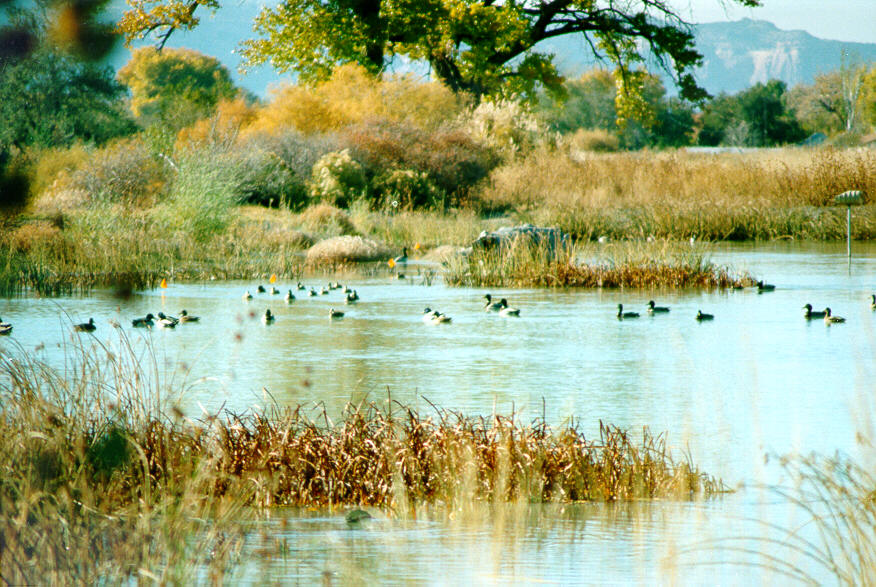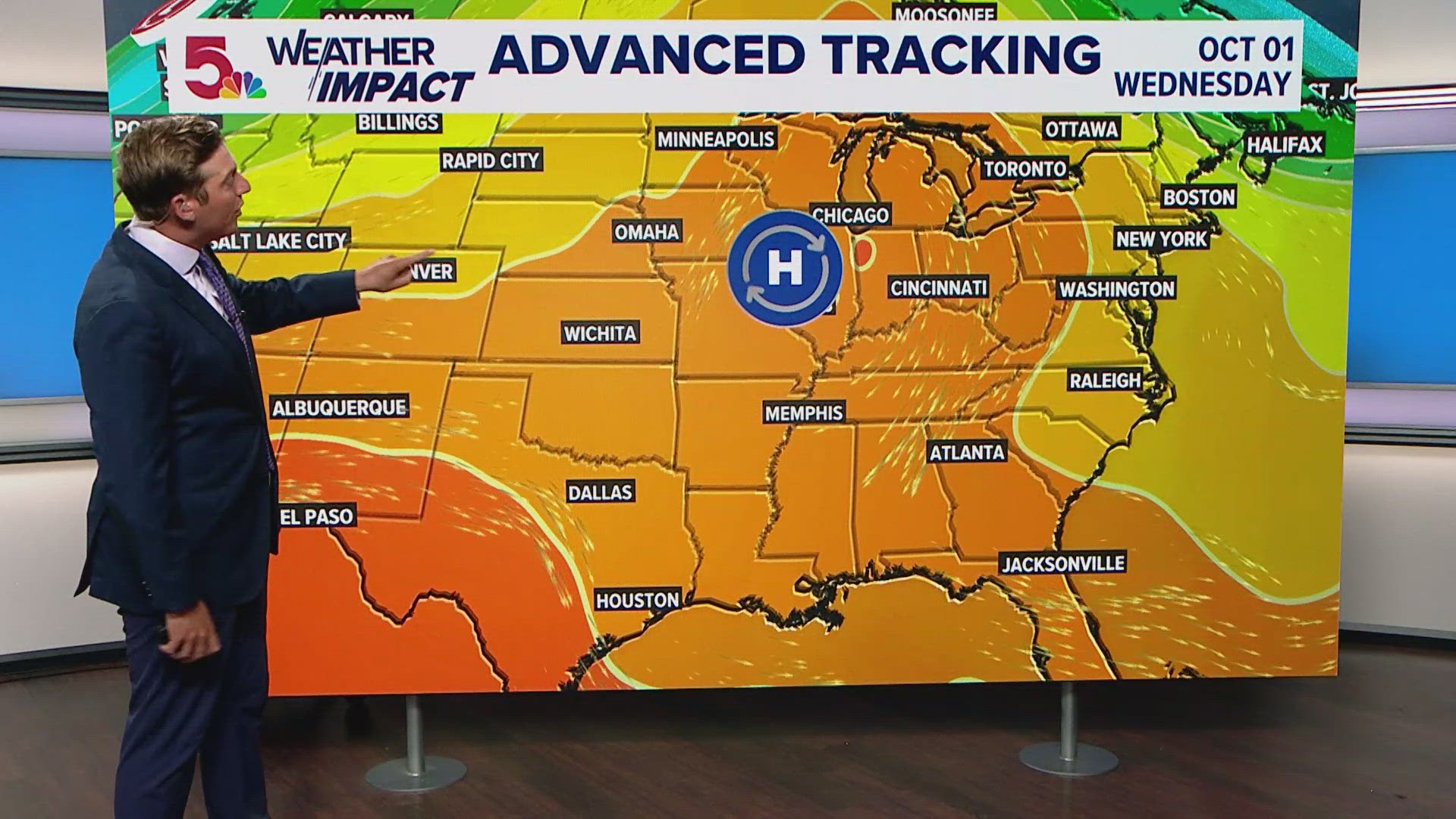Report on Maryland’s Coastal Wetland Conservation and Adaptation Strategy
Introduction: Addressing Coastal Vulnerability through the Sustainable Development Goals
The state of Maryland is experiencing significant environmental threats to its coastal regions, including accelerated shoreline erosion and sea-level rise occurring at nearly twice the global average. These changes jeopardize coastal wetlands, which are critical ecosystems. In response, Maryland’s Department of Natural Resources (MDNR) and Department of the Environment (MDE) have initiated a comprehensive conservation program. This initiative directly addresses several United Nations Sustainable Development Goals (SDGs), primarily focusing on climate resilience, ecosystem protection, and sustainable community planning.
- SDG 13 (Climate Action): The entire strategy is a direct measure to adapt to the impacts of climate change, specifically sea-level rise and increased storm frequency.
- SDG 14 (Life Below Water): By protecting coastal wetlands, the program safeguards vital nursery and feeding grounds for marine species and maintains water quality, contributing to the health of coastal and marine ecosystems.
- SDG 15 (Life on Land): The initiative focuses on conserving and restoring wetland habitats, halting biodiversity loss, and ensuring the functionality of terrestrial ecosystems that are intrinsically linked to the coast.
Strategic Framework and Methodology
Maryland’s approach is built upon a two-phased strategy designed to build ecological and societal resilience against climate change.
- Maryland’s Climate Action Plan: This initial phase acknowledged the vulnerability of coastal wetlands and mandated that land conservation programs prioritize the protection of areas susceptible to sea-level rise to allow for wetland migration.
- 2011 Maryland Commission on Climate Change Report: This second phase recommended specific actions, including the use of advanced modeling to assess risks to species and habitats and to inform land management goals for critical areas.
The Sea Level Affecting Marshes Model (SLAMM)
A central component of the state’s methodology is the application of the Sea Level Affecting Marshes Model (SLAMM). This tool was used to project the effects of sea-level rise on coastal wetlands and identify priority areas for conservation, directly supporting the implementation of SDG 13.
- The analysis modeled future wetland distribution for the years 2050 and 2100, using a sea-level rise projection of 1.04 meters by 2100.
- It allowed officials to identify high-priority wetland migration corridors and vulnerable areas requiring immediate protection.
- Data inputs included wetland size, species composition, and ecosystem connectivity to inform resilience strategies.
Key Outcomes and Contributions to Sustainable Development
The SLAMM analysis has produced actionable intelligence that advances Maryland’s conservation objectives and aligns with key SDG targets.
Enhancing Ecological Resilience (SDG 14 & SDG 15)
The project’s primary outcome is the enhanced ability to protect biodiversity and ecosystem functionality. By identifying and prioritizing land for conservation, the state is working to preserve the integrity of both marine and terrestrial ecosystems.
- The analysis informed the state’s “GreenPrint” GIS mapping system, which designates “Targeted Ecological Areas”—lands of high ecological value identified for conservation.
- This proactive planning helps ensure that as sea levels rise, there are sufficient upland areas available for wetlands to migrate, preserving habitat continuity and supporting life both on land and below water.
Informing Sustainable Planning and Community Resilience (SDG 11)
The findings provide critical information for land use planners and conservation organizations, helping to build more resilient and sustainable coastal communities. By understanding where future wetlands will be, planners can adapt development and infrastructure to avoid future risks.
- The results of the SLAMM analysis were made publicly available via the “Maryland Coastal Atlas,” an online GIS dashboard.
- This transparency empowers local managers, conservation groups, and the public to integrate climate adaptation into their planning, contributing to safer and more sustainable communities.
Fostering Partnerships for the Goals (SDG 17)
The initiative exemplifies a successful partnership between state agencies (MDNR and MDE) and its commitment to sharing data with a broad range of stakeholders. This collaborative approach is essential for achieving large-scale conservation and climate adaptation goals.
Relevant Sustainable Development Goals (SDGs)
SDG 13: Climate Action
The article directly addresses climate change adaptation. It details Maryland’s response to climate-related hazards like sea-level rise and increased storm frequency, which are occurring at “nearly twice the global average.” The state’s development of a “Climate Action Plan” and strategies for “adapting to sea-level rise and coastal storms” are central themes, aligning with the goal of taking urgent action to combat climate change and its impacts.
SDG 14: Life Below Water
The focus on protecting “coastal wetlands,” “saltwater marshes,” and “estuaries” connects directly to SDG 14. The article discusses efforts to conserve and restore marine and coastal ecosystems. The goal is to preserve “current and future ecosystem diversity and functionality” of these vital habitats in the face of environmental threats, which is a core objective of this SDG.
SDG 15: Life on Land
While the context is coastal, the article’s emphasis on “wetland restoration and conservation programs” and the protection of “tracts of upland habitat where wetlands migration is likely to occur” links to SDG 15. Wetlands are critical terrestrial ecosystems, and the article highlights actions to halt habitat degradation (“loss of several islands and vast acreage of shoreline”) and integrate ecosystem values into land use planning.
SDG 11: Sustainable Cities and Communities
The article touches upon making human settlements resilient. The analysis provides “land use planners and conservation organizations valuable information to help preserve areas for wetland migration and adapt to higher sea-levels.” This involves integrated planning to protect coastal communities and infrastructure from climate-related disasters, a key aspect of SDG 11.
SDG 17: Partnerships for the Goals
The initiative described is a collaborative effort. The article explicitly states that Maryland’s Department of Natural Resources (MDNR) worked “in partnership with the Maryland Department of the Environment (MDE).” Furthermore, the state aims to share knowledge and tools, like the “Maryland Coastal Atlas,” with “land managers, conservation planners, and the public” to encourage “public and private coastal conservation efforts,” reflecting the multi-stakeholder approach of SDG 17.
Identified SDG Targets
-
Target 13.1: Strengthen resilience and adaptive capacity to climate-related hazards and natural disasters.
- The entire article is a case study of Maryland strengthening its resilience. It describes a strategy to adapt to the specific climate-related hazards of “storms, inundation, and sea-level rise.”
-
Target 14.2: Sustainably manage and protect marine and coastal ecosystems to avoid significant adverse impacts, including by strengthening their resilience.
- The state’s implementation of “wetland restoration and conservation programs” is a direct action to manage and protect coastal ecosystems. The use of the SLAMM model is intended to strengthen their resilience by anticipating future changes.
-
Target 14.5: Conserve at least 10 per cent of coastal and marine areas.
- The identification of “high priority wetland areas for protection” and the designation of “Targeted Ecological Areas” for conservation are concrete steps towards this target.
-
Target 15.5: Take urgent and significant action to reduce the degradation of natural habitats and halt the loss of biodiversity.
- The article notes the “loss of several islands and vast acreage of shoreline” as a problem being addressed. The programs aim to “preserve current and future ecosystem diversity and functionality,” directly targeting the halt of biodiversity loss.
-
Target 15.9: Integrate ecosystem and biodiversity values into national and local planning.
- The SLAMM analysis provides “land use planners and conservation organizations valuable information.” This information is integrated into the “GreenPrint” GIS Mapping System to guide conservation priorities, which is a clear example of integrating ecosystem values into local planning tools.
Implied or Mentioned Indicators
-
Existence of national/local climate change adaptation strategies:
- The article explicitly mentions “Maryland’s Climate Action Plan” and the “Building Societal, Economic, and Ecological Resilience” report as the state’s strategic framework for adaptation.
-
Proportion of local governments that adopt and implement local disaster risk reduction strategies:
- The article describes how the state-level analysis provides “land use planners and conservation organizations valuable information,” implying its use in local planning and risk reduction for sea-level rise.
-
Coverage of protected areas in relation to marine areas:
- The identification and mapping of “High Priority Conservation Areas” and “Targeted Ecological Areas” serve as a direct indicator of the extent of coastal areas designated for protection.
-
Data on wetland characteristics:
- The article mentions that “Data on wetland characteristics including size, species composition, and ecosystem connectivity have helped inform resiliency options.” These data points are direct indicators used to measure the health and status of the ecosystems.
-
Mechanisms for multi-stakeholder partnerships:
- The formal partnership between “MDNR” and “MDE” is a clear indicator. Additionally, the creation of the “Maryland Coastal Atlas,” a “public coastal GIS dashboard,” is an indicator of a mechanism for sharing knowledge with the public and private sectors.
SDGs, Targets, and Indicators Analysis
| SDGs | Targets | Indicators |
|---|---|---|
| SDG 13: Climate Action | 13.1: Strengthen resilience and adaptive capacity to climate-related hazards. | Existence of state-level strategies (“Maryland’s Climate Action Plan,” “Building… Resilience” report). |
| SDG 14: Life Below Water | 14.2: Sustainably manage and protect marine and coastal ecosystems. | Implementation of “wetland restoration and conservation programs.” |
| SDG 14: Life Below Water | 14.5: Conserve coastal and marine areas. | Identification and mapping of “High Priority Conservation Areas” and “Targeted Ecological Areas.” |
| SDG 15: Life on Land | 15.5: Reduce the degradation of natural habitats and halt biodiversity loss. | Data on “size, species composition, and ecosystem connectivity” used to preserve ecosystem diversity. |
| SDG 15: Life on Land | 15.9: Integrate ecosystem and biodiversity values into local planning. | Use of SLAMM analysis and “GreenPrint” GIS Mapping System by “land use planners.” |
| SDG 11: Sustainable Cities and Communities | 11.b: Increase the number of settlements adopting integrated plans for adaptation to climate change. | Development of a comprehensive strategy to “adapt to higher sea-levels” for coastal areas. |
| SDG 17: Partnerships for the Goals | 17.17: Encourage and promote effective public, public-private and civil society partnerships. | Partnership between MDNR and MDE; creation of a “public coastal GIS dashboard” (“The Maryland Coastal Atlas”) for public and private use. |
Source: epa.gov







